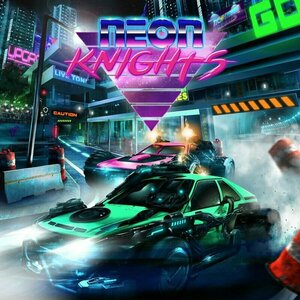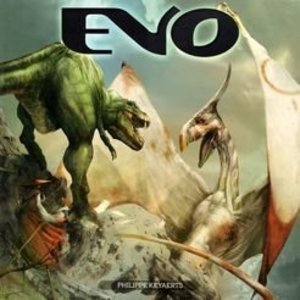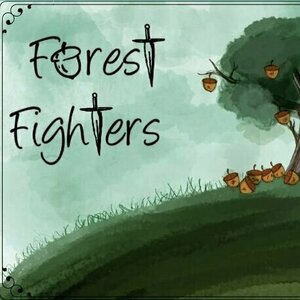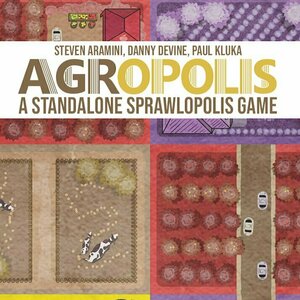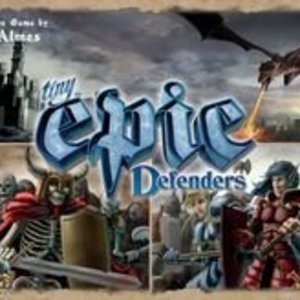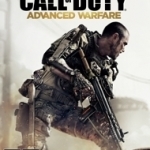Purple Phoenix Games (2266 KP) rated Neon Knights: 2086 in Tabletop Games
Sep 10, 2020
Neon Knights 2086 (here forth known as NK) is a car racing game of customization and street battle. The game essentially takes place over three race weeks (rounds) with each week being divided into a preparation period and then the race day itself. The winner of NK is not necessarily the driver who crosses the finish line more often, but rather the driver who wisely invests in upgrades and tempts Lady Luck to be on their side during crucial dice rolls.
DISCLAIMER: We were provided a copy of this game for the purposes of this review. This is a retail copy of the game, so what you see in these photos is exactly what would be received in your box. I do not intend to cover every single rule included in the rulebook, but will describe the overall game flow and major rule set so that our readers may get a sense of how the game plays. For more in depth rules, you may purchase a copy online or from your FLGS. -T
To setup, separate and shuffle each different-backed deck of cards, set them on the board in their places, and display the number of cards equal to the card spaces on the board. Give each player components in their character color, the matching play mat, and starting car parts to be tucked under their mat. Determine the starting player who will construct the first race course out of the provided map chunks and the game may begin!
Again, I will not be explaining every rule in the game as there are just too many to cover, but the game is played over three weeks. During the preparation days leading up to the race on day 7 (Sunday I guess), players will be taking actions to draft upgrades to their cars, or implants into their driver’s BRAIN, getting themselves sponsored so they can make bank come pay day, and also accepting bets on how each driver can earn a little extra on the side come race day.
Each day leading up to the race will allow players to complete one action, and pay day is on Day 5. This is when players will be paid out by their sponsors thus allowing players more spending power at the various upgrade shops. However, Race Day looms ahead and drivers will be making sure they have the best car they can afford because racing is a matter of life or death.
During a race, players will be choosing their initial speed and traveling the course attempting to finish first to gain points, but also to inflict damage on opposing cars and trying to complete their bets they’ve made. Cars will typically travel the number of spaces that the driver has chosen as the speed for the turn, but along the way the cars will be passing over neon lights in the street that are colored according to the suggested speed to overcome them. Go too fast and players will need to roll damage dice to simulate clipping a curb or smashing into a building corner. Go the correct suggested speed or less and pass over the lights no problem and with no damage dice to roll. Of course, car upgrades can assist with this.
When cars end their turn on a space with another car, a battle ensues and damage is calculated. Also, either before or after movement a car can decide to use a weapon on a rival car in range of their weapon to inflict extra damage. After all, a well-damaged car must screech to a halt and possibly use precious resources to repair the damage. Races are flat out bonkers but are the crux of NK. The winner of NK is the player who can amass the most VP at the end of the game and will be able to run a victory lap in the streets.
Components. This game is one of those hefty 12×12 boxes that is packed with goodies. The board is huge. The player components are beautiful and amazing. The player mats are great and laid out really well. The big chunky street map tiles are big and chunky. The colors are perfectly ’80s and perfect for a board game. I have no issues at all with the components. Oh wait, just one little eensy weensy complaint. I wish the font in the rule book was something of the serif variety instead of block all-caps. I felt as if I were being scolded for reading the rules.
All that said, I find Neon Knights 2086 to be a beautiful and relatively quick-playing racing game with the added bonus of car customization akin to that of creating an RPG character (and everyone knows that’s the best part of RPGs). The prep days are super fast to play through because you are basically just taking cards from the offers or drawing cards from the face-down decks to improve your ride, or repairing your car from previous races, and negotiating with sponsors to get those sweet gigs.
The racing, however, is where the game play takes off. It’s here that all the planning and optimizing is put to the test. It’s here where you discover that some of your “upgrades” just ain’t cuttin’ it, and need to be upgraded further. Hopefully a new sweet (and affordable) weapon will come out during the week. Maybe a new sponsor will enter and entice you with tons of money. And then it’s Race Day and you can take your rig out to demolish the competition. Ahh sweet demolition.
This game was a big surprise for me for several reasons. First, I didn’t realize how much I actually enjoyed some of the things from the ’80s. Those colors are just so dang beautiful. That design. So good. But also I just don’t play a lot of car racing games so I was skeptical at first. I’m not a fan of NASCAR so obviously I won’t like any car racing game, right? At least that was my initial thought. Neon Knights 2086 may just have piqued my interest in trying out some other racing titles in the future. For these reasons, Purple Phoenix Games gives this one a bruised 8 / 12. If you are aching for a racing game with battles in the streets and customization in the sheets, check out Neon Knights 2086. I am now a believer, and can’t wait to play this one many more times.
Purple Phoenix Games (2266 KP) rated Evo (second edition) in Tabletop Games
Oct 11, 2019
Evo pits its players against one another in a clash to populate an island too small for everyone to enjoy harmoniously. It’s a… Small (dino) World, if you will. By improving your clan’s dinosaurs, survivability, and vigor you may be able to establish the most prosperous clan. At least until the meteor hits and wipes everyone off the face of the island anyway…
DISCLAIMER: We do not intend to cover every single rule included in the rule book, but will describe the overall game flow and major rule set so that our readers may get a sense of how the game plays. For more in depth rules, you may purchase a copy online or from your FLGS. -T
Evo is played over several phases over several turns. Exactly how many turns is unknown because the end game is denoted by a randomized meteor token. To setup Evo shuffle the meteor token into the bottom few climate rotation tokens and set them as a stack face down. These will be the round trackers and also will dictate how the climate may change from round to round. Set the climate wheel on the starting space and within view of the players. Shuffle the event cards and place them face down near the enhancement bid board. Give each player the mat, dinomeeples (yay I got one that makes sense!), and bidding totem of their chosen color. Lay the correct map for the amount of players on the table and have each player place their dinomeeples on the corresponding starting spaces on the map. Give each player their starting money (in VP chips). Determine the starting initiative order and place the totems on the bid board in that order. Set aside the combat die and you are finally ready to play!
The first phase of the game is Climate. (after the first round) A new climate token will be revealed which directs the players to adjust the climate wheel or keep it status quo. The climate wheel determines which spaces on the map will have cold, hot, Death-Valley-type, or safe climates for dinos to live on. This is known information at the beginning of the round so the players can plan out the rest of the round to keep their dinos safe before the culling.
The next phase is bidding on enhancements. Draw from the bag enough tokens for the players to quarrel over and place them randomly on the bid board. In initiative order players will bid on enhancements using their VP chips. When a player is outbid for an item they must place their bid totem on another item. Once all players are winning bids on items they pay the supply for their winnings and add it to their mat in the appropriate slots. These could include items to help a dino survive the cold, increase their attack potential, give their dinos more movement (or walks, as we call them), and other special abilities.
Now that the players are enhanced a bit more, their dinosaurs can move on the map. This may be necessary for some, but not all, depending on how they have enhanced their dino clans. A dino can move as many spaces as feet are shown on the player’s board, or the total movement can be split by multiple dinos. The more feet, the more movement. If, during the movement phase, a dino wishes to enter a space currently inhabited by a rival clan’s dinomeeple a combat will occur. Combat is determined by comparing horns and defenses and the roll of the combat die.
Once movement is over, it’s time for the dinos to get saucy – it’s baby-making time! I mean, it’s reproduction time! That’s not appropriate either. You can create one more dinomeeple to place on the map adjacent to another dino. This is how you may expand your empire of cute dinomeeples.
Once these phases are complete the players will consult the climate wheel to see which of their dinos are safe from elimination. For those dinos that are safe a player will earn 1 VP. Play continues in this fashion until the round that the meteor token is flipped from the stack of climate tokens that typically start a round. As the meteor destroys all dinomeeples on the map players will total their VPs and the winner is the clan leader with the most VP at game’s end.
Components. There are a LOT of components in this box. One of the best components in the game is the well-designed box insert. As you unpack the game you can really just setup right out of the box. The maps, bidding board, and climate wheel are normal-style game boards and of good quality. The cards are OK and get the job done. The die is a painted wooden die and it’s fun to roll. The climate tokens, VPs, and enhancement chips are all thick cardboard. The play mats are a matte cardstock (and that’s fine because it just holds your components). The other components are the cloth bag for enhancement draws and those cutie little dinomeeples! Everything is really well-produced and has held up really well for us. My only minor minor complaint is that I wish the dinomeeples were a different shape per color, but everyone having brontosauri is fine with me too. The art. The art is SPECTACULAR on this one. Seriously really great artwork. The cards, the boards, the playmats, the enhancements. Everything looks just amazing.
I kinda already let you know that I love this game. So I am not going to wax poetic here and go into some long analyses of why I love it. It is a more-involved Small World (I hope you caught that shameless reference in the intro) that uses dinosaurs instead of fantasy race/class combos. You know Evo is great when you can compare it to an already-great game from the same designer. I also think you could play Evo and Small World back-to-back and have an enjoyable experience. They are similar, but offer a different experience FOR SURE. I know this one is tough to find nowadays, but please, if you see it for sale in the wild PICK IT UP. It’s a great game that will offer years and years of play for you and your game group. Purple Phoenix Games gives this one a prehistoric 16+ / 18. I say “plus” because I may change it to a 6 in the future. It’s that good.
Purple Phoenix Games (2266 KP) rated Forest Fighters in Tabletop Games
Oct 22, 2020
Forest Fighters pits players against each other, being rival squirrel clans preparing to gather acorns for the winter. Only one clan can succeed because there is but one oak tree in the entire forest from which acorns may be gathered. Players will be recruiting other animal species onto their side by way of deck building game mechanics and using gained cards to send to battle against their opponents.
DISCLAIMER: We were provided a copy of this game for the purposes of this review. This is a retail copy of the game, so what you see in these photos is exactly what would be received in your box. I do not intend to cover every single rule included in the rulebook, but will describe the overall game flow and major rule set so that our readers may get a sense of how the game plays. For more in depth rules, you may purchase a copy online or from your FLGS. -T
To setup, separate the cards into their respective decks. Deal each player five Forager Squirrels, two Acorns, and three Blackberries. This creates the 10 card deck players will shuffle and begin the game playing. Players will also choose 12 other animal deck types to use for the game and display all the decks within reach of all players. Each player will then draw the top five cards from their shuffled deck to create their starting hand. The game may now begin!
On a turn a player will use all the cards from their hand to purchase new cards from the main display to be added to their discard pile, like every other deck building game out there. The cards have multiple uses, however, and up to two currency values. Most animals will be recruited using Food (like Blackberries and Honey), and Food cards can mostly be obtained by using Forage values. Example: the starter Forager Squirrel can be used as one Food, one Forage, or even one Attack.
Speaking of Attack, on a player’s turn, should they be done shopping for other cards, they may attempt to attack an opponent using animal cards in their hand. Players will add up the Attack value on the cards they wish to use and declare an opponent who will reveal cards whose Defense value meets or exceeds the Attack value. Should the attacker win they will be able to take possession of Blackberries and Honey cards in the loser’s hand, send an animal back to its stack, or take all the Acorn cards. Acorns are both VP and the determining factor in ending the game; once all Acorn cards have been purchased the game is over.
Each animal card recruited will also have a special ability that can be used during a turn, and some of them are quite powerful. Turns continue in this fashion until either all Acorns have been purchased or all players except one have been eliminated. A player is eliminated once they can no longer purchase cards and have no more animals in their deck.
Components. Let me tell you about the good and the okay. The rulebook is a small pamphlet style that has only five pages of rules. And honestly, if you have played deck builders before, could have only taken one page. I like that. There is just enough information to get the game going, but doesn’t explain every card’s abilities, or throw in three pages of game art. Similarly, if any questions arise with card abilities, the card dividers provide more text to help clear up the questions. The cards are all good quality, and there are a ton of them.
The okay part of the game is the art on the cards. It is not at all bad, but it could use a different art style to be a bit more attractive. The last little concern I have is the design of the box. The size, shape, color, and all that is fine. What I wish was different was having the title of the game on all sides. My shelves are organized in a way that I try to pack as much as I can into the space by orienting the boxes to be as small and deep as possible so that the smallest side of the box is showing. I cannot do that with Forest Fighters because the smallest sides have a few art slides and credits. Honestly, this isn’t quite as egregious as some games (I’m looking at you, Oceans), so it’s not a huge deal, but worth mentioning for me.
All in all the game is a solid deck-builder with that extra bit of attacking and stealing from opponents. I have never been a fan of Dominion as I find its themelessness boring and its mechanics antiquated. Now, I think I might be able to use Forest Fighters as a gateway deck builder that is more interesting, but still considered light for new gamers.
I am kind of sad that I missed the Kickstarter for this one because I would have liked to have splurged for the higher tier (those yummy extras), but I am happy to have added Forest Fighters to my collection. I believe it is a great entry into deck-building and if you are looking to find a similar game with a cute theme, an interesting new take on the genre, and can play up to five comfortably, then I recommend you give this one a try. I think you’ll like it. Just don’t ever use the raccoons against me or I will be attacking you every turn.
Purple Phoenix Games (2266 KP) rated Agropolis in Tabletop Games
Sep 24, 2020
Disclaimer: We were provided a copy of Agropolis for the purposes of this preview. The components are not yet finalized, and will probably change from what you see here to the finished Kickstarter campaign. Agropolis is a stand-alone expansion to the popular ButtonShy title, Sprawlopolis. We have reviewed Sprawlopolis (as both a Solo Chronicles, as well as Multiplayer) in the past, so I do not intend to rehash the entire ruleset in this preview. -L
In Agropolis, players are working cooperatively to create a cohesive and thriving rural community. The overall gameplay is the same as Sprawlopolis, with a few thematic differences. To begin the game, randomly select 3 cards to dictate the scoring conditions for your specific game. Deal 1 card to each player (3 to the starting player), and place one card face-up in the center of the table. On your turn, you will draw a card, play a card into the communal countryside, pass your remaining cards to the next player, and then draw a new card. The goal is to create a countryside that scores enough points to surpass the combined total of the 3 scoring condition cards.
Each card is divided into four zones: cornfields, livestock pens, orchards, and vineyards. The selected scoring condition cards determine how you can earn and lose points for your card/zone placements in the countryside. That’s where strategy comes into play – you can’t just place your cards wherever you want! There has to be a method to the madness, and each placement must be carefully selected for maximum end-game points. When all cards have been played, tally up your points – earning points for each zone, gaining/losing points for scoring conditions, and deducting points for roads. If your final score is higher than the total of the 3 scoring conditions combined, then you have won!
As a big fan of Sprawlopolis, I am happy to report that ButtonShy has done it again with Agropolis. The overall gameplay and atmosphere is the same between both games, which adds a comfort and familiarity to the game, but the thematic differences and scoring conditions make the game feel subtly unique. Aside from a country theme, Agropolis has an optional challenge known as the Feed Fee. Certain cards have a feedbag and livestock symbol underneath the card’s score, and all cards have a combination of livestock symbols at the bottom of the scoring description. To play with the Feed Fee, simply count the number of that specific type of livestock across all 3 scoring condition cards and add that to your scoring total. You might even have multiple Feed Fees in play for a single game! That is a new added challenge unique to Agropolis, and can really up the ante of the gameplay.
Our preview copy of Agropolis also came with a 6-card combo pack expansion that allows you to combine both Agropolis and Sprawlopolis into one big game. To play with the combo pack, randomly select one scoring condition card from the three decks: Agropolis, Sprawlopolis, and the combo pack. Randomly select another combo pack card to be the starting card of your city/country blended community. On your turn, you will draw 1 Agropolis card and 1 Sprawlopolis card. Play only one of those cards to the tableau, and the other is discarded. When both draw decks run out, the game is over and points are tallied. This combo game is uniquely challenging because you have scoring conditions from both games. You can’t focus on the city-side and let the country peter out, because at least one of the scoring condition cards calls for a country-specific goal. This combo pack takes the simplicity of both games and really ups the amount of strategy required for success. Definitely a combo I will be playing a lot!
All in all, how is Agropolis? The gameplay itself is simple, strategic, and satisfying to play. Although nearly identical to Sprawlopolis, the thematic differences and country-specific scoring conditions make the game feel new and refreshing. I absolutely love the 6-card combo pack to combine both games together. It just heightens the gameplay and strategic considerations, and takes it from a smaller game to something with a little more heft. Some people are all about that city life, but I think Agropolis will show you the beauty of the rural community. Be sure to check out the Kickstarter campaign, going live on Tuesday, September 29th!
Purple Phoenix Games (2266 KP) rated Tiny Epic Defenders in Tabletop Games
Jun 12, 2019
DISCLAIMER!! This review is for vanilla Tiny Epic Defenders, first edition. We have since added the second edition and The Dark War expansions, so we will revisit this game again including those additions for a nice contrast. -T
A kingdom at peace, finally, after years of war. All is calm across the lands, but the quiet never lasts. Reports start to come in of monsters spotted in the surrounding regions. If they manage to take over the Capital City, all will be lost. But there is still hope! A group of mighty warriors bands together to defend their kingdom at all costs! Only by working together can this group (the only line of defense between peace and destruction) defeat the monsters and save the realm!
In Tiny Epic Defenders, you play as one of the heroes trying to defend the kingdom. You and your comrades must travel between the outer regions of the kingdom and fend off the advancing monsters! Communication and cooperation are key – one small misstep could be the difference between victory and defeat. All of the heroes have unique special abilities, and all of the regions of the kingdom offer either a bonus or penalty for the heroes defending them. On your turn, you get 3 actions to either move, defend, or use a special ability. Once per round, there will be a group turn, where you must collectively decide how to best use the 3 actions between all players. New monsters surface every round, and eventually the Epic Foe will begin its final assault on the realm! If you manage to slay the Epic Foe before the Capital City falls, you win! But if you are overrun with monsters, unfortunately it’s game over for your kingdom.
The thing about Tiny Epic Defenders is that it starts off seemingly super easy, but then suddenly everything is on fire and you lose. I think that disparity comes from the turn order. The turn deck is shuffled anew every round, so the hero turns are not always evenly spaced throughout the deck. Sometimes all of the hero turns occur early in the round, which allow monsters who emerge later to attack undefended regions (players can move only on their turn), and overwhelm the heroes. The same happens if all the hero turns occur too late in the round – the monsters have already done their worst and the heroes must scramble to rectify the situation. And on top of that, a more menacing monster is added to the deck every round as well, so that just creates more of an imbalance between player turns and monster turns.
Even though the game can get a little overwhelming, I do really like the cooperative aspect of it! Everyone is working towards the same goal and all communication is open and free. Need advice for what to do on your turn? Just ask! Have an idea about how to deal with a certain monster? Tell the group! No single player bears all of the pressure because it really is a group effort!
Someday soon we will get the Second Edition to the table. And get that expansion added in too. But for the time being, our thoughts based solely on the original base game, Purple Phoenix Games give Tiny Epic Defenders a 16 / 24.
https://purplephoenixgames.wordpress.com/2018/12/05/tiny-epic-defenders-review/
Gareth von Kallenbach (980 KP) rated the PC version of Call of Duty: Advanced Warfare in Video Games
Jun 19, 2019
The game is set in the near future where Exo Skeletons, drones, and target seeking grenades have become commonplace on the battlefield.
Players are cast as a young Marine who after a successful but costly battle finds himself at a crossroads. He is given a new chance when the head of a large and powerful private defense contractor offers to make him part of the team.
At this point players will take on a deadly terror threat all over the globe and will have an arsenal of weapons at their disposal including hover bikes for a thrilling chase through Detroit.
Of course there is a darker side to the story and a bigger plot is discovered where the player must stand up for what he knows is right even if it means turning his back on others.
The graphics of the game are first rate and the facial animations have to be seen to be believed. I enjoyed the new weapons and storylines, but much of the gameplay while exciting does follow the series staples of run and gun, stealth missions, and vehicle chases.
The addition of the Exo Suit is a huge plus as it allows for jet powered jumps and moves as well as the ability to cling to metallic surfaces.
This feature enhances the storylines greatly as I enjoyed jumping to and from moving vehicles, climbing up vast buildings, and making tall jumps in combat.
What really makes this game shine is the amazing multiplay which not only combines multiple modes such as Kill Confirmed, Deathmatch, Team Deathmatch, and countless other modes, it also has co-op missions as well.
The ease of customization in the multiplay modes is great as everything from energy weapons to machine guns is available to players as is the ability to customize your perks, kill streak rewards, and accessories.
The game offers bonus items that can be accessed in menu and in game which really enhances the appeal of the game. I remember turning a solar lense on some enemies and frying them down as well as getting a giant combat suit and cutting players down to size.
I had issues with the multiplayer in Ghosts and had to force myself to play to make max level, but thankfully Advanced has not had those issues as I happily play the online modes as often as I can. I have enjoyed the maps and the variety of weapons and combat styles immensely.
The inclusion of Kevin Spacey was a nice addition as far as I was concerned as it brought a new level of menace and complexity to what could have otherwise been a stock video bad guy. You can almost understand his motivations.
I was able to complete the single player campaign in a bit over 6 hours but I enjoyed the thrill ride it contained and being able to use the abilities of the suit as well as the grapple were well featured throughout the highly detailed levels of the game.
In the end if you like Call of Duty then you will likely love this game and if you are not a fan, then no matter what the publisher and designers do will likely not appease you. For me, this was a nice mix of the old and familiar with some new directions that shows there is still plenty of life in the franchise.
http://sknr.net/2015/01/08/call-dutyadvanced-warfare/

iDo Notepad Pro (Journal/Diary)
Lifestyle and Productivity
App
iDo Notepad Pro is a simple to use notepad diary/journal app. Easily create notes, loads of...

Video & TV Cast Pro for Samsung Smart TV + Blu-ray
Photo & Video and Entertainment
App
Watch any web-video, online movie, livestream or live tv show on your Samsung Smart TV or Blu-ray...

Contract Killer: Sniper
Games and Entertainment
App
You are a master assassin, hired to infiltrate secure locations and eliminate high-profile targets....

Hustle Sports Training Drills
Sports and Health & Fitness
App
Hustle offers basketball instruction from expert coaches and trainers. Whether you're looking for...
